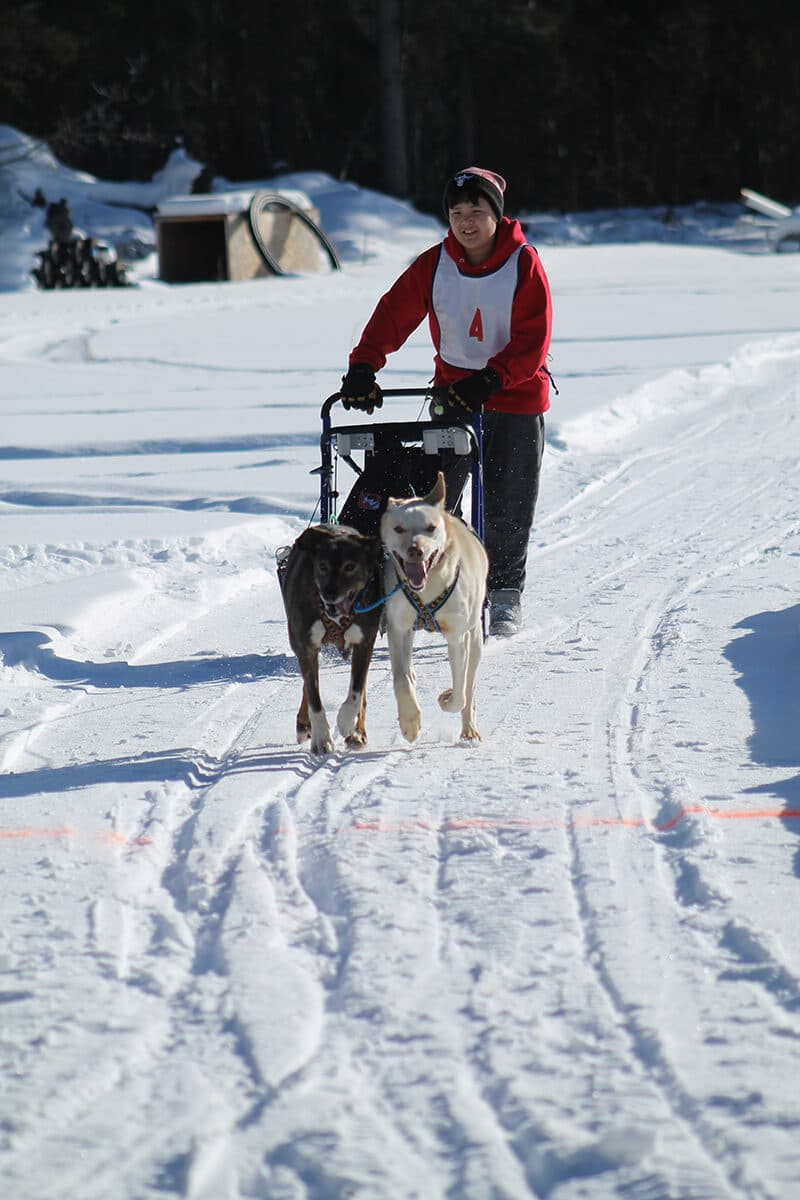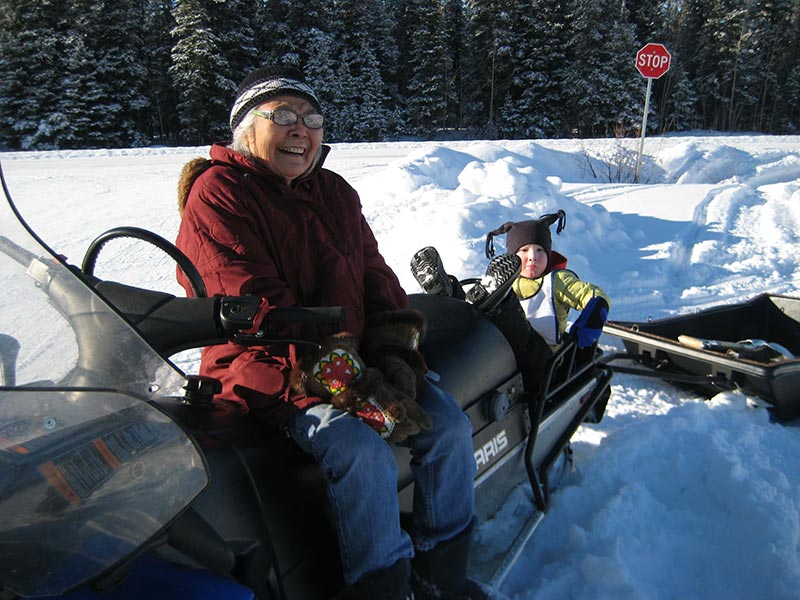Overshadowed by Mount Sanford and just miles from America’s largest national park, Chistochina remains the most traditional of the Ahtna villages, where subsistence is a way of life and mushing a passion for most of its 93 residents. It is home to the Cheesh’na Tribe.

An Alaska Department of Fish and Game survey found that 93 percent of the households successfully harvest wild resources each year, primarily salmon, moose and berries, caching 522 pounds of food per household. That averages to 199 pounds per person.
Chistochina is located at mile 32.7 on the Tok Cutoff, 42 miles northeast of Glennallen. It began as an Ahtna fish camp and later became a stopover place for traders and trappers. When the Valdez-Eagle Trail was constructed during the gold rush to Eagle in 1897, miners used the traditional trail past the village.

Charley family matriarch Lena enjoys the races at the Chistochina Fun Days. Photo courtesy of Barbara Cellarious
The Charley family may well be the first family of the village, led by matriarch Lena, who starred in the 2014 premiere of the highly popular Bizarre Foods on the Travel Channel. Host Andrew Zimmern joined Lena and Ahtna Board Director Franklin John and shareholder-owners Ruby Sinyon, Evelyn Beeter and Jessica Denny for a dinner of moose-head stew and moose bone marrow.
Zimmern calls Lena “a living link to the past, where hunting, fishing and trapping were not done for sport, but for survival. Lena is an amazing woman who is keen on passing down traditional knowledge, customs and language to her children and younger generations.
“Lena still participates in the family moose hunt, which is central to the family’s way of life. It provides the raw material for cooking, preserving and for making clothes. She is a master when it comes to transforming the moose’s hide into gloves and boots that are worn throughout the community. It’s a labor of love, about a month-long process of scraping,
stretching and smoking the hides into something malleable. She even uses the same natural softener employed by ancient peoples all over the world – animal brains.”
Lena was one of Alaska’s premier mushers for nearly half a century, a tradition shared by Sy Neeley, Lemmie Charley and now Iditarod musher Heidi Sutter, who operates KMA Kennel, “home of 19 happy huskies.” Sy recalls growing up with working dog teams in Chistochina. “They were big teams. Big, heavy dogs. … They were like Clydesdales and Percherons. You don’t take Arabians out in the field.” The dogs hauled supplies from the Copper Valley’s trading posts.

Longtime musher Lemmie saved the life of another musher in the Copper Basin 300 Race by packing her in his sleeping bag and taking her to safety. When he arrived at Summit Lake Lodge, his boots were frozen to his feet and he had to sit in a bathtub of cool water to peel them off.
Today, that mushing tradition is commemorated in the Chistochina Fun Days, which features six- and four-dog sprint races and one-, two- and four-dog junior races – all for a purse of $5,000. Chistochina residents Evelyn Beeter, Agnes Denny and Jerry Charley are all avid dog mushers who run the four- and six-dog races.
In fact, Evelyn outraced everyone in the four- and six-dog races this year, while youth winners included Zoey Erhart, Titus Blackard and Sadie Blackard.
Franklin John’s Moose Head Stew
- 1 moose head
- Dry onion soup mix
- Rice
Skin head. Cut off the nose and burn the hair off. Cut or scrape the meat off the bone and dice the meat into small chunks. Heat water in a pot, put in all meat. Dice the moose’s nose and add. Let boil 4 to 6 hours. Add package of dry onion soup mix and add rice at the end.
